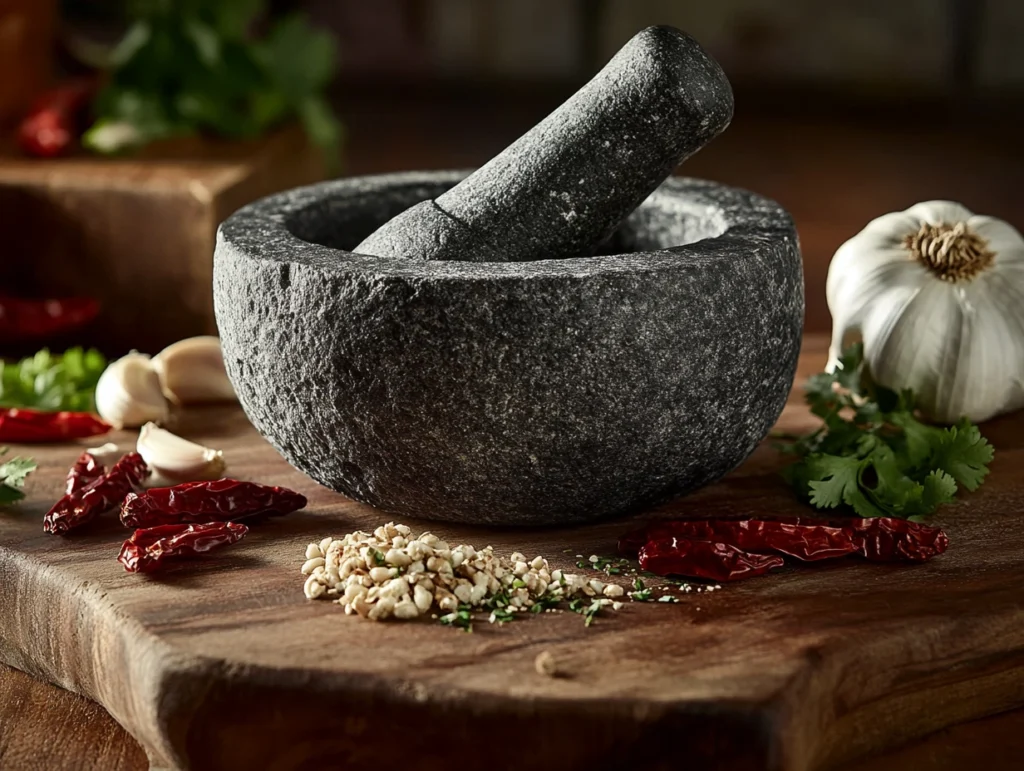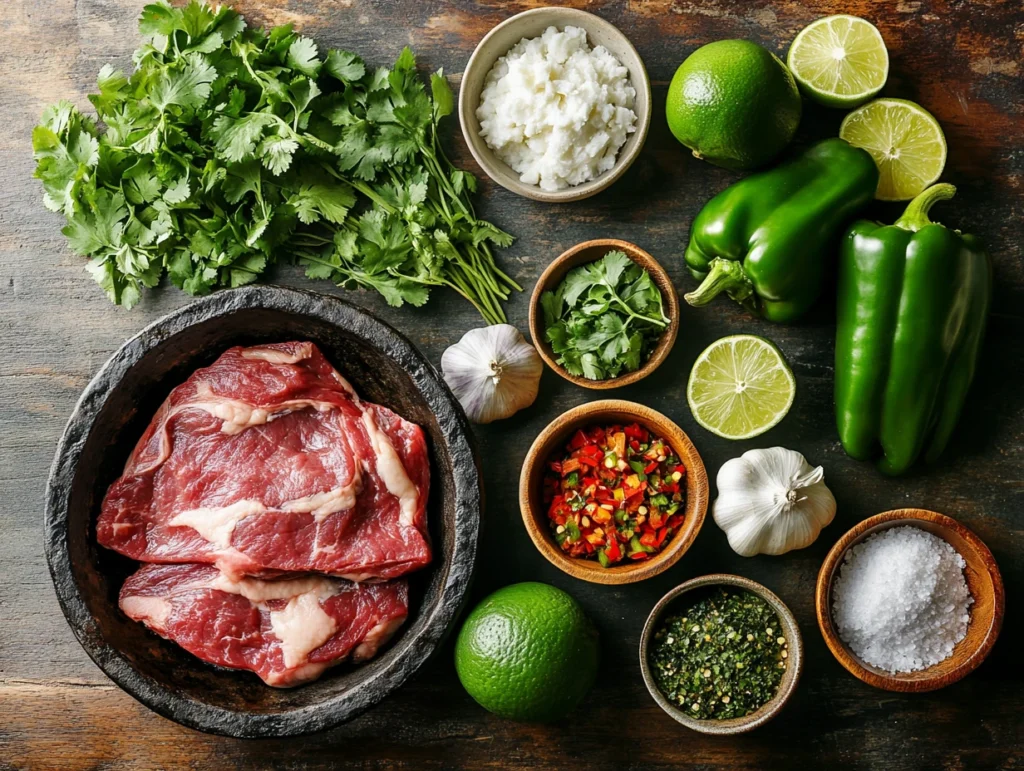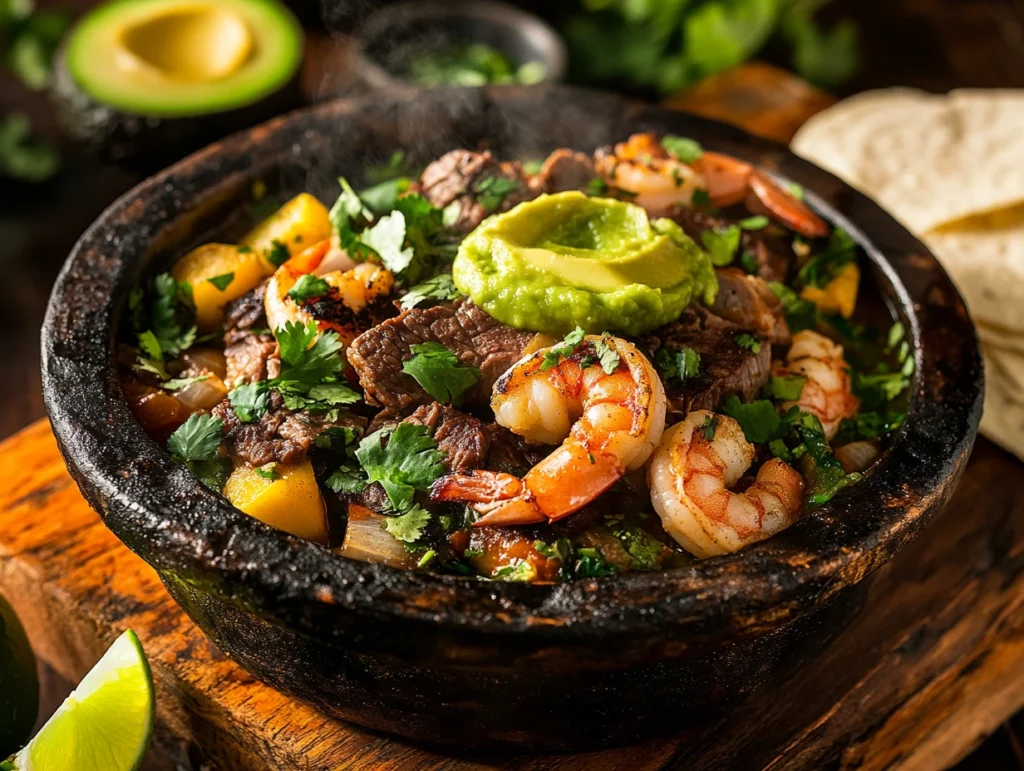Cooking is more than just following steps; it’s a chance to connect with different cultures and traditions. The molcajete recipe is a doorway into the bold and colorful world of Mexican cooking. It combines simple, vibrant flavors and a rich history that spans centuries. This dish, served in a rustic stone bowl, is a feast for the senses—tender meat, smoky grilled veggies, and zesty salsa that takes you right to the heart of Mexico. Whether you love trying new flavors or want to make your lunch extra special, this recipe is sure to please.
The molcajete, a time-tested tool made from volcanic stone, does more than hold your food—it brings it to life. The stone keeps your dish hot and adds a unique flavor. This recipe is great for anyone, whether you’re hosting a backyard cookout, making a meal your family will remember, or treating yourself to something amazing. Let’s jump into this flavorful journey and learn how to create an authentic molcajete dish that everyone will love.
What is a Molcajete?
The molcajete is a classic tool in Mexican cooking, much like a mortar and pestle but with its own special charm. Made from volcanic stone, this traditional bowl has been used for thousands of years by native Mexican cultures such as the Aztecs. Its rough surface makes it great for grinding spices, making salsas, and mixing marinades. More than just a kitchen tool, the molcajete is a cultural symbol that reflects traditional cooking methods and family recipes passed down through generations.

The word “molcajete” comes from the Nahuatl words molli (sauce) and caxitl (bowl). In the past, molcajetes were used to prepare and serve everything from simple salsas to hearty dishes like molcajete stew. They became a must-have in Mexican homes. Even today, they are a symbol of tradition and are often handed down from parents to children. This dish, often called molcajete preparado, turns the tool into a serving piece that takes center stage at the table.
Using a molcajete has some great benefits. Its ability to hold heat keeps food warm for a long time, making it perfect for slow meals with family and friends. Also, grinding in a molcajete brings out the natural oils in spices and herbs, adding deeper flavors to your food. To get the best results, it’s important to season your molcajete before you use it. This simple step, called curing, removes any leftover grit and smooths out the surface for cooking..
If you’re curious about the history and cultural significance of molcajetes, you can explore more here. This link delves deeper into its origins and why it remains a beloved tool in Mexican kitchens worldwide.
Essential Ingredients for Molcajete Recipe

Creating a molcajete dish is all about celebrating fresh, vibrant ingredients. From succulent proteins to smoky vegetables and creamy cheese, every component works together to create a dish that’s as delicious as it is visually stunning. Let’s break down the key ingredients and their roles in this recipe.
Proteins
The protein is the centerpiece of your molcajete dish, and the choices are versatile. Common options include:
- Flank steak: This cut is prized for its tenderness and robust flavor. It’s an excellent choice for grilling, as it absorbs marinades beautifully and cooks quickly over high heat.
- Chicken: For a lighter option, chicken works wonderfully. Marinate it with lime juice, olive oil, and chili powder for a zesty kick.
- Shrimp: If you prefer seafood, shrimp adds a touch of elegance and pairs beautifully with the smoky flavors of the grilled vegetables.
When selecting your protein, consider the preferences of your guests. Marinating the meat enhances its flavor and tenderness. A simple blend of olive oil, lime juice, garlic powder, and oregano works wonders. For an in-depth guide to preparing tender cuts of meat, don’t miss “How to prepare tender and flavorful beef short ribs for your Mexican feast” here.
Vegetables
Grilled vegetables are an essential component of the molcajete recipe, adding both texture and flavor. The smoky, charred edges of the veggies contrast beautifully with the richness of the meat. Some must-have vegetables include:
- Nopales (cactus paddles): Slightly tart and packed with nutrients, nopales are a staple in traditional Mexican dishes.
- Poblano peppers: These peppers have a mild heat and a smoky taste, making them a great addition.
- Squash and onions: Sweet and tender, these veggies complement the bold flavors of the dish.
For tips on grilling these vegetables to perfection, check out “Creative ways to incorporate grilled vegetables into your dishes” here.
Cheese
No molcajete dish is complete without cheese. Panela cheese is a popular choice due to its mild flavor and ability to hold its shape when grilled. When added to the hot molcajete, it softens just enough to create a creamy texture that balances the spice of the salsa and the smokiness of the vegetables.
Salsas
The salsa is the soul of the molcajete dish, tying all the elements together. While there are many variations, the most common choices include:
- Salsa verde: A tangy and slightly spicy salsa made with roasted tomatillos and serrano peppers.
- Tomatillo salsa: Smoky and rich, this salsa adds depth to the dish.
Step 1: Curing and Preparing Your Molcajete
Before using your molcajete, it’s crucial to cure it. This process removes any stone particles and ensures the surface is smooth enough for grinding. Here’s how to do it:
- Wash the molcajete: Rinse it thoroughly with water. Avoid using soap, as it can be absorbed into the stone and alter the flavors of your food.
- Grind uncooked rice: Add a handful of rice to the molcajete and grind it into a fine powder using the pestle. Repeat this process until the rice remains white, indicating the stone is clean.
- Rinse and dry: Wash the molcajete again with water and let it air dry completely.
This simple step ensures your molcajete is ready to enhance the flavors of your ingredients while maintaining its integrity over time.
Step 2: Preparing the Proteins and Vegetables
Cooking proteins and vegetables for a molcajete dish requires attention to detail to ensure every bite bursts with flavor. Start with your protein of choice by marinating it for at least 30 minutes. This not only enhances the taste but also helps keep the meat juicy during grilling.
For vegetables, preheat your grill to medium-high and lightly brush each piece with olive oil to prevent sticking. Grill the vegetables in batches, ensuring they are cooked evenly and have a slight char for that signature smoky flavor.
Want to elevate your grilling game? Take a look at “Explore versatile marinade techniques for grilling perfection” here.
Step 3: Creating Authentic Salsas
The soul of any molcajete dish lies in its salsas. These sauces not only bring vibrant flavors but also tie all the components of the dish together. The traditional method of preparing salsa in a molcajete involves grinding the ingredients by hand, which releases their natural oils and enhances the taste. Let’s explore two iconic salsa recipes—Salsa Verde and Roasted Tomatillo Salsa—that are perfect for this dish.
Salsa Verde
Salsa verde is a tangy and slightly spicy green salsa made from tomatillos and serrano peppers. Here’s how to make it:
Ingredients:
- 8 medium tomatillos, husked and rinsed
- 2 serrano peppers (adjust based on spice preference)
- 2 garlic cloves
- 1/2 cup fresh cilantro leaves
- Salt to taste
Instructions:
- Roast the tomatillos and serrano peppers on a hot skillet until they develop a charred, slightly softened appearance.
- Begin by grinding the garlic and salt into a paste in the molcajete.
- Add the charred serrano peppers and grind until smooth.
- Finally, incorporate the tomatillos one at a time, grinding until you achieve a coarse yet blended texture.
- Stir in chopped cilantro for a fresh, herbal note.
This salsa verde is zesty and bright, making it a perfect match for grilled meats and vegetables.
Roasted Tomatillo Salsa
This variation adds a smoky, rich flavor that complements the boldness of a molcajete dish.
Ingredients:
- 10 tomatillos
- 1 poblano pepper
- 2 garlic cloves
- 1/4 white onion
- 1/4 teaspoon dried ancho chile powder
- Salt and lime juice to taste
Instructions:
- Roast the tomatillos, poblano pepper, onion, and garlic until charred.
- Remove the skin from the poblano pepper and discard the seeds.
- Start by grinding the garlic and ancho chile powder into a paste.
- Add the onion and poblano pepper, grinding until smooth.
- Gradually add the tomatillos, ensuring the salsa remains thick yet spreadable.
- Adjust the seasoning with salt and lime juice.
Step 4: Assembling the Molcajete Dish
Now comes the fun part—assembling your masterpiece. The key to a successful molcajete dish is layering the ingredients to create a harmonious balance of flavors and textures.

- Heat the molcajete: Place it in the oven at 400°F for about 20 minutes to ensure it’s piping hot. This step is crucial, as the heated stone will keep your dish warm for longer.
- Add the salsa: Start with a generous layer of salsa verde or roasted tomatillo salsa at the bottom of the molcajete. The heat from the stone will intensify the flavors of the salsa.
- Layer the vegetables: Arrange the grilled nopales, squash, and poblano peppers over the salsa, letting their charred edges peek through.
- Add the proteins: Place the marinated and grilled flank steak, chicken, or shrimp on top. Slice the meat into bite-sized pieces for easy serving.
- Finish with cheese: Add chunks of panela cheese, letting them soften and melt slightly from the residual heat of the molcajete.
For garnishes, consider adding fresh avocado slices, lime wedges, or a sprinkle of chopped cilantro. Serve the dish with warm tortillas, rice, and beans on the side for a complete meal.
Step 5: Customizing the Recipe
The beauty of a molcajete recipe is its adaptability. You can customize the dish based on your preferences, dietary needs, or available ingredients. Here are some variations to try:
- Seafood Molcajete: Replace the beef or chicken with a mix of shrimp, scallops, and whitefish. Add a splash of lime juice and cilantro to enhance the seafood flavors.
- Vegetarian Molcajete: Skip the proteins and add extra vegetables like mushrooms, zucchini, and bell peppers. A dollop of refried beans can provide additional texture and richness.
- Spicy Twist: Incorporate dried chile de árbol or habanero peppers into your salsa for an extra kick.
If you’re cooking indoors, you can prepare this dish in a cast-iron skillet, which retains heat similarly to a molcajete. While it may lack the authentic presentation, the flavors will remain just as delightful.
Tips for Hosting a Molcajete Feast
A molcajete dish is more than a meal—it’s an event. Here are some tips to make your gathering unforgettable:
- Set the scene: Decorate your table with vibrant tablecloths, Mexican pottery, and festive accents to create a welcoming atmosphere.
- Beverage pairings: Serve traditional Mexican drinks like horchata, tamarind agua fresca, or even a refreshing margarita to complement the flavors.
- Interactive serving: Place the molcajete at the center of the table and let guests assemble their plates with tortillas, rice, and beans.
Hosting a molcajete feast is a fantastic way to share the joy of cooking with your loved ones while celebrating the rich heritage of Mexican cuisine.
Cultural Significance and Generational Traditions
The molcajete represents more than just a cooking tool—it embodies the heart and soul of Mexican culture. For many families, molcajetes are heirlooms passed down through generations, carrying the flavors of countless meals and the stories of those who prepared them. Each scratch and stain on the stone tells a tale of gatherings, celebrations, and shared memories.
This dish, in particular, showcases the ingenuity of Pre-Hispanic Mexican tools and their enduring relevance in modern kitchens. By preparing a molcajete dish, you’re not just cooking—you’re honoring a tradition that has connected people through food for centuries.
Frequently Asked Questions (FAQs)
1. How do I clean and maintain my molcajete after use?
Rinse it with warm water and scrub it gently with a brush. Avoid using soap, as the stone can absorb it. Let it air dry completely before storing.
2. Can I use my molcajete for non-Mexican recipes?
Absolutely! The molcajete is great for making pesto, curry pastes, or even grinding spices for baking.
3. What are some budget-friendly protein options for this recipe?
Chicken thighs, pork shoulder, or even tofu can be used as economical alternatives to flank steak or shrimp.
4. How do I adjust the spice level in the salsa?
To reduce heat, use fewer serrano peppers or remove their seeds before grinding. For extra spice, add chile de árbol or a pinch of cayenne.
5. Can I prepare this dish in advance?
Yes, you can grill the proteins and vegetables ahead of time and reheat them just before assembling the molcajete. The salsa can also be made a day in advance for convenience.
